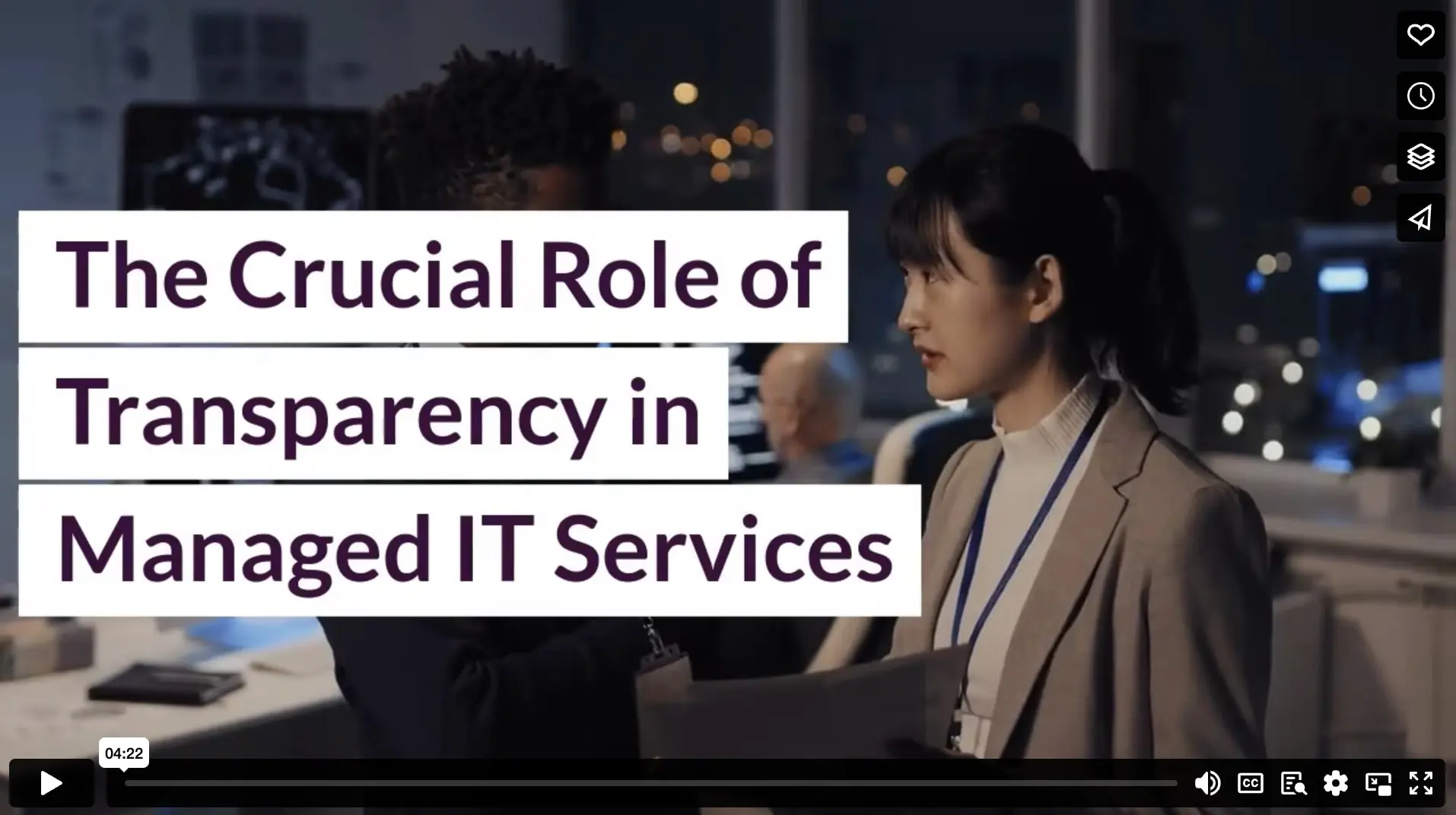Ever wondered why there’s a disconnect between what your IT service promises and what it delivers? A lack of transparency is often the root cause. When service providers aren’t clear about their processes, clients can feel left out and uncertain about the services they receive.
So how do you improve this aspect of your IT services relationship? Start by focusing on key areas like:
Communication
Your IT managed service provider should work closely with you, almost like they’re part of your team. They can use modern tools like a client portal, where you can access all important info—system performance reports, project plans, and other essential documents.
System Performance
Make sure your IT partner keeps you in the loop. They should confidently share regular updates in weekly, monthly, and quarterly meetings. This includes showing you how your SAP systems are managed with solid proof. Open conversations about service level agreements (SLAs) and how they’re meeting them are also key.
Issue Resolution
Quick and effective problem-solving is vital. Your IT service provider must be transparent about how they tackle issues. This includes clear timelines for resolution and regular updates during the process. Such transparency in troubleshooting builds confidence and trust, ensuring you’re not left in the dark when challenges arise.
Data Protection
Your MSP should be clear about their data safety protocols and how they comply with privacy laws. Ensure they openly communicate their security practices. This transparency is essential. You’ll feel better knowing how your data is managed.
Configurations and Updates
When your IT MSP implements updates or changes configurations, they should clearly explain the reasons behind these actions to you. This is particularly important for security updates. You need to understand why these changes are essential for your system’s protection.
Terms and Conditions
Insist your IT MSP is crystal clear about the terms and conditions of their service. Often, these can be packed with technical jargon, making it tough to grasp what you’re agreeing to. It’s crucial they break down the contract into plain language, so you know exactly what services you’re getting, the costs involved, and the process for handling issues. Understanding the fine print helps avoid surprises and ensures you’re on the same page.
Project Management
Ensure your MSP partner keeps you in the loop about ongoing projects and their progress. They should regularly update you on milestones, potential roadblocks, and any changes in timelines or strategies. This transparency is crucial for planning and managing your own business processes.
Incident Handling and Reporting
Your MSP should give it to you straight when something goes wrong, like a security breach or tech glitch. They need to tell you right away what’s happened, how it affects you, and what they’re doing to fix it. This kind of honesty helps you deal with the situation better and plan your next move to keep your business running smoothly.
Resource Allocation
Make sure your MSP is clear about what they’re doing for you and who’s doing it. They should let you know who’s working on your projects and how they’re using their tech and people to meet your needs. Getting the full picture helps you see the value they’re bringing to your business and ensures they’re lining up with what you expect.
Access to IT Consultants
It’s crucial you can directly chat with the people handling your IT. Look for an MSP that offers something like a message board or live chat in their client portal. This allows you to shoot questions and get instant responses from the team managing your systems, ensuring quick and clear communication.
Resolution of Issues
Time is critical in IT management. Choose an MSP that’s transparent and quick to act when problems arise. Open communication channels between you and the IT team can speed up solutions, significantly reducing downtime for your business.
Work Requests
You need an MSP that handles your requests transparently, whether they’re routine tasks or major projects. They should let you track these requests, showing you how quickly and accurately they’re being addressed. This transparency is vital, especially for larger organizations with multiple, varying requests. You want assurance that every issue is getting the attention it deserves.
A Partner You Trust
Building a trusting, transparent relationship with your MSP is essential. Start by having clear conversations with your provider about their processes and how they handle your data. Make sure you’re getting regular updates and have access to the information you need. Don’t shy away from asking tough questions about security, system performance, and their approach to problem-solving.
Remember, a reliable MSP is one that communicates openly and keeps you informed every step of the way. It’s time to expect more and settle for nothing less than complete clarity in your IT services.
Video

Infographic
Why is there a disconnect between your IT service’s promises and what it delivers? When service providers are unclear about their processes, clients can feel left out and uncertain. Learn in this infographic how to improve this aspect of your IT services relationship.




